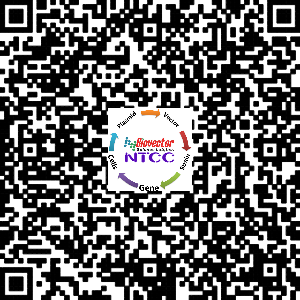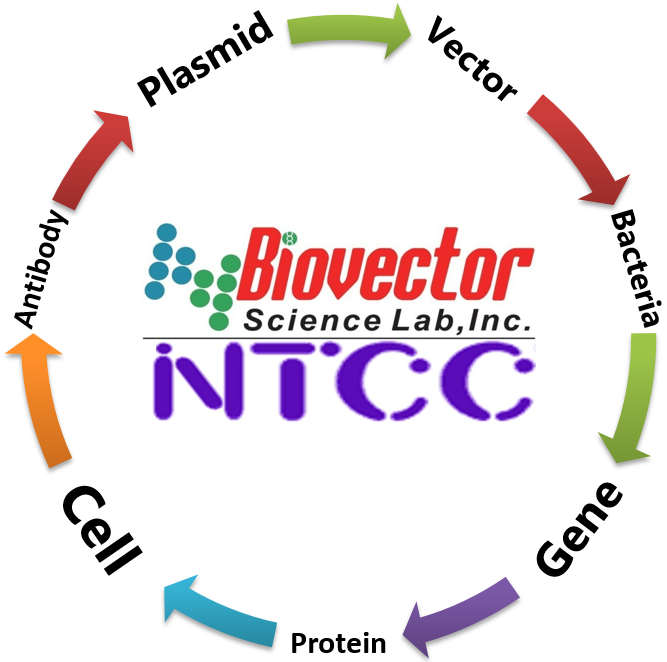BioVector's SL1344-mCherry鼠伤寒沙门氏菌红色荧光报告菌株-Biovector NTCC典型培养物保藏中心
- 价 格:¥798950
- 货 号:BioVector-SL1344-mCherr
- 产 地:北京
- BioVector NTCC典型培养物保藏中心
- 联系人:Dr.Xu, Biovector NTCC Inc.
电话:400-800-2947 工作QQ:1843439339 (微信同号)
邮件:Biovector@163.com
手机:18901268599
地址:北京
- 已注册
BioVector's SL1344-mCherry strain refers to a strain of bacteria, specifically Salmonella enterica serovar Typhimurium (often abbreviated as S. Typhimurium) strain SL1344, that has been genetically engineered to express the mCherry fluorescent protein.

Let's break down each component:
1. Salmonella enterica serovar Typhimurium SL1344:
Salmonella enterica: This is a species of Gram-negative, rod-shaped bacteria that are a major cause of foodborne illness (salmonellosis) in humans and animals.serovar Typhimurium: This is a specific serotype within the
Salmonella entericaspecies.S. Typhimuriumis a common cause of gastroenteritis.SL1344: This is a widely used, well-characterized laboratory strain of
S. Typhimurium. It is a virulent strain often used in animal models to study the pathogenesis ofSalmonellainfections, host-pathogen interactions, and bacterial gene expression during infection.It's known for its ability to invade and replicate within host cells, including epithelial cells and macrophages.
2. mCherry:
mCherry is a monomeric red fluorescent protein (RFP).
Origin: It was derived through directed evolution from the Discosoma sp. red fluorescent protein (DsRed), originally from a sea anemone.
Properties:
Red Fluorescence: It emits red light when excited by appropriate wavelengths (excitation maximum around 587 nm, emission maximum around 610 nm).
This makes it distinct from green fluorescent proteins (GFPs) and allows for multi-color imaging experiments. Monomeric: Crucially, mCherry is a monomer, meaning it exists as a single protein unit.
This is an improvement over earlier RFPs like DsRed, which were tetrameric (formed a tetramer of four protein units). Monomeric fluorescent proteins are preferred for fusion tags because they are less likely to disrupt the function or localization of the protein they are fused to, and they prevent potential aggregation issues. High Photostability: mCherry is known for its excellent photostability, meaning it resists photobleaching (loss of fluorescence over time due to light exposure) better than many other fluorescent proteins.
This is vital for long-term imaging experiments. Rapid Maturation: It matures relatively quickly, allowing for faster visualization of gene expression or protein localization after introduction into cells.
Low pH Sensitivity: It generally performs well across a range of pH values found in biological systems.
Construction of SL1344-mCherry:
The typical way to generate an SL1344-mCherry strain involves introducing the gene encoding mCherry into the S. Typhimurium SL1344 genome or on a stable plasmid. Common methods include:
Plasmid-based expression: The mCherry gene is inserted into a bacterial expression plasmid (e.g., using cloning techniques). This plasmid will contain a suitable bacterial promoter (e.g., a constitutive promoter or an inducible promoter like
Ptac orPlac) to drive mCherry expression, and a selectable marker (e.g., an antibiotic resistance gene) to allow selection of bacteria carrying the plasmid. The plasmid is then transformed into SL1344.Chromosomal integration: For more stable expression and to avoid issues with plasmid loss, the mCherry gene can be integrated directly into the
S. TyphimuriumSL1344 chromosome. This often involves homologous recombination techniques (e.g., using lambda Red recombinase or suicide vectors) to insert the mCherry gene at a specific, non-essential locus.
Applications of SL1344-mCherry:
The SL1344-mCherry strain is an invaluable tool in Salmonella research, enabling a wide range of studies, including:
Live Imaging of Infection:
Host-Pathogen Interactions: Directly visualize
Salmonellawithin host cells (e.g., epithelial cells, macrophages, immune cells) and tissues using fluorescence microscopy. This allows researchers to track bacterial invasion, replication, intracellular localization (e.g., within theSalmonella-containing vacuole or in the cytosol), and spread.In Vivo Tracking: Follow
Salmonelladissemination and colonization in animal models of infection (e.g., mice, chickens), providing insights into the infection dynamics in real-time or over time.Biofilm Formation: Study the formation and structure of
Salmonellabiofilms on various surfaces.
Cellular Biology Studies:
Phagocytosis Assays: Quantify and visualize the uptake of
Salmonellaby phagocytic cells.Intracellular Survival: Monitor the survival and proliferation of
Salmonellawithin different host cell types.Co-localization Studies: Use mCherry-tagged
Salmonellain conjunction with other fluorescent probes (e.g., GFP-tagged host proteins) to study co-localization and interactions at the molecular level within infected cells.
Drug Discovery and Antimicrobial Research:
Antimicrobial Efficacy: Evaluate the effectiveness of antibiotics or novel antimicrobial compounds by observing their impact on bacterial viability and growth within host cells.
Phagocyte-mediated Killing: Assess the ability of immune cells to kill
Salmonella.
Vaccine Development:
Track the dissemination and persistence of attenuated vaccine strains of
Salmonellain vaccinated animals.
Biovector NTCC典型培养物保藏中心
- 公告/新闻




